Everyday Mathematics 1st Grade Answer Key Unit 6 Addition Fact Strategies
Everyday Mathematics Grade 1 Home Link 6.1 Answers
The Hour Hand
Family Note
Today your child observed how the hour hand on an analog clock moves as an hour passes. For now, children focus on telling time to the hour while looking at the hour hand only. Later in the year, they will be introduced to the minute hand.
Draw the hour hand.
Question 1.
3 o’clock

Answer:

Explanation:
Time in the clock is 3 o’clock.
Question 2.
7 o’clock

Answer:
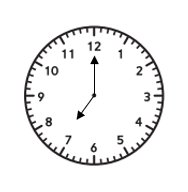
Explanation:
Time in the clock is 7 o’clock.
Question 3.
a little before 9 o’clock

Answer:
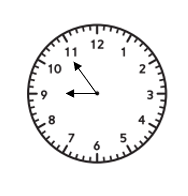
Explanation:
Time in the clock is a little before 9 o’clock.
Question 4.
a little after 2 o’clock

Answer:

Explanation:
Time in the clock is a little after 2 o’clock.
Practice
Question 5.
Bao has 7 dog stickers, 4 cat stickers, and 3 dinosaur stickers. How many stickers does Bao have in all?
Number model: ________ + _________ + ________ = _________
Answer:
Total number of stickers Bao has in all = 14 or Fourteen.
Number model: ___7_____ + ____4_____ + ____3____ = ____14 or Fourteen_____.
Explanation:
Number of dog stickers Bao has = 7 or Seven.
Number of cat stickers Bao has = 4 or Four.
Number of dinosaur stickers Bao has = 3 or Three.
Total number of stickers Bao has in all = Number of dog stickers Bao has + Number of cat stickers Bao has + Number of dinosaur stickers Bao has
= 7 + 4 + 3
= 11 + 3
= 14 or Fourteen.
Everyday Math Grade 1 Home Link 6.2 Answer Key
Number Stories
Family Note
Today your child solved number stories about animals. Have your child tell a number story to go with a picture he or she chooses. Help your child write the number story in words and record a number model for the story. The number model may show addition or subtraction, depending on how your child solves the story.
Example:
I have 4 balloons. Jamal brought 1 more balloon. We have 5 balloons together.
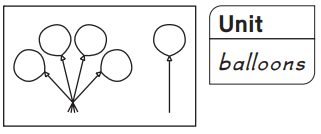
Number model: 4 + 1 = 5
Question 1.
Find a picture from a magazine, or draw your own picture. Use it to write a number story. Write a number model to go with your story.

Number model: ___________
Answer:
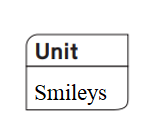
Total number of smileys we have together = 7 or Seven.
Number model: 3 + 4 = 7 or Seven.
Explanation:
Number of Smileys I have = 3 or Three.
Number of Smileys My Sister has = 4 or Four.
Total number of smileys we have together = Number of Smileys I have + Number of Smileys My Sister has
= 3 + 4
= 7 or Seven.
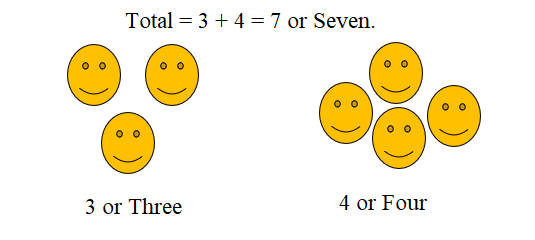
Practice
Question 2.
Alex’s pencil is longer than Brianna’s pencil. Alex’s pencil is shorter than Jordan’s pencil. Whose pencil is the longest?
Answer:
Jordan’s pencil is the longest among Alex’s and Brianna’s pencils.
Explanation:
Alex’s pencil is longer than Brianna’s pencil.
=> Alex’s pencil is the longest pencil.
Alex’s pencil is shorter than Jordan’s pencil.
=> Jordan’s pencil is the longest pencil.
Everyday Mathematics Grade 1 Home Link 6.3 Answers
Shapes Made from Shapes
Family Note
Today your child determined whether number sentences are true or false, practiced addition doubles, and created shapes with given attributes. They will continue this work more formally in future units.
Question 1.
Draw a shape using 2 triangles. Draw a different shape using 2 triangles.
Answer:
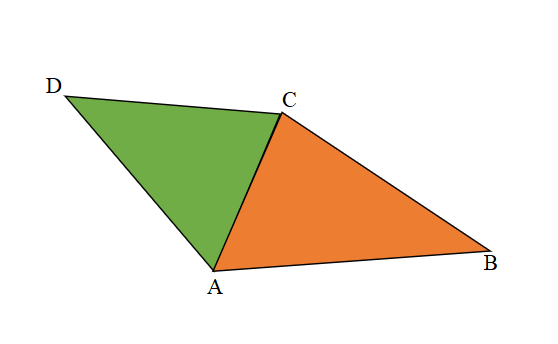
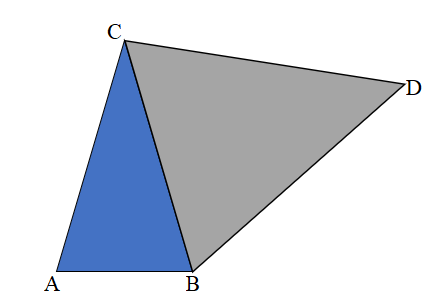
Explanation:
Figure 1: A shape drawn by using 2 or Two triangles.
Figure 2 : Different shape drawn by using 2 or Two Triangles.
Question 2.
Draw a shape using a rectangle and a triangle. Draw another shape using a rectangle and a triangle.
Answer:
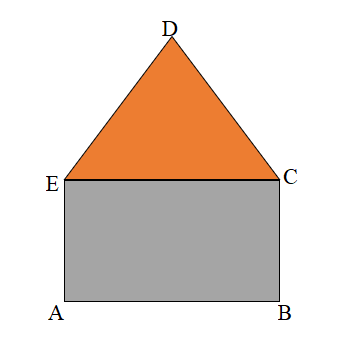
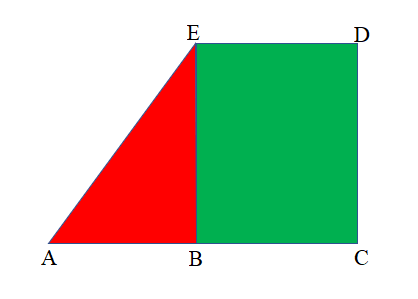
Explanation:
Figure 1: A shape drawn by using a rectangle and a triangle.
Figure 2 : Different shape drawn by using a rectangle and a triangle.
Question 3.
How do you know you made a different shape?
Answer:
I have made a different shape because the size of the two shapes in not same nor equal.
Explanation:
I know I have made a different shape because the size of the two shapes in not same nor equal.
Practice
Question 4.
Find 10 more than each of the numbers. Think about counting up by 10s to help you.
30 _______ 28 ________ 45 _________
Answer:
Counting up by 10s:
30 __40_____.
28 ___38_____.
45 ___55______.
Explanation:
Counting up by 10s:
30 + 10 = 40 or Forty.
28 + 10 = 38 or Thirty Eight.
45 + 10 = 55 or Fifty Five.
Everyday Math Grade 1 Home Link 6.4 Answer Key
Near Doubles
Family Note
Today your child learned how to use a doubles fact, such as 8 + 8 = 16, to help solve facts close to doubles, such as 8 + 9 = 17. This strategy is called near doubles. Children learned about helper facts (facts that are useful for solving other facts) in Unit 4 and will continue to learn about other helper facts as the year progresses.
Question 1.
Write a helper fact and then the final answer for each number sentence in the table below.
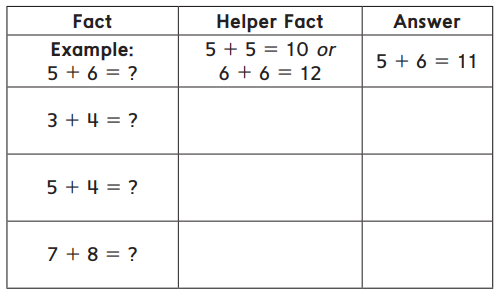
Answer:
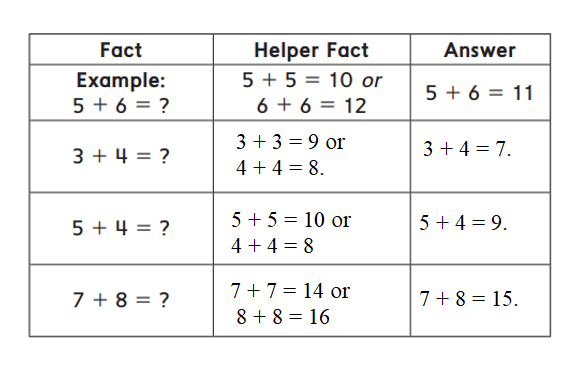
Explanation:
Fact : Helper Fact: Answer:
3 + 4 = ?? 3 + 3 = 9 or 4 + 4 = 8. 3 + 4 = 7.
5 + 4 = ?? 5 + 5 = 10 or 4 + 4 = 8. 5 + 4 =9.
7 + 8 = ?? 7 + 7 = 14 or 8 + 8 = 16. 7 + 8 = 15.
Practice
Question 2.
Circle the true number sentences.
3 = 3
4 = 9 – 5
6 = 3 + 2
4 = 7 – 2
10 + 2 = 12
4 + 9 = 12
Answer:
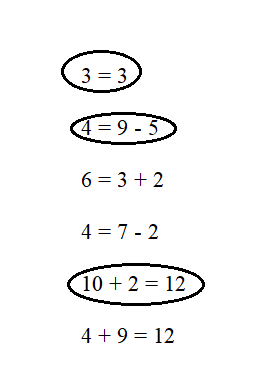
Explanation:
3 = 3 (True)
4 = 9 – 5
=> 4 = 4. (True)
6 = 3 + 2
=> 6 = 5. (False)
4 = 7 – 2
=> 4 = 5. (False)
10 + 2 = 12
=> 12 = 12. (True)
4 + 9 = 12
=> 13 = 12. (False)
Everyday Mathematics Grade 1 Home Link 6.5 Answers
Recording Near- Doubles Strategies
Family Note
Today your child spent more time using doubles facts to help solve nearby facts called near doubles. Children focused on explaining their solution strategies using words, pictures, or number sentences. Ask your child to explain how he or she solved the number stories below either with words or with a written number sentence.
Solve the number stories.
Question 1.
Tommy had 4 pretzels. His mom gave him 4 more pretzels. How many pretzels does Tommy have now?
_________ pretzels
Answer:
Total number of pretzels Tommy have now = 8 or Eight.
Explanation:
Number of pretzels Tommy had = 4 or Four.
Number of more pretzels Tommy’s mom gave him = 4 or Four.
Total number of pretzels Tommy have now = Number of pretzels Tommy had + Number of more pretzels Tommy’s mom gave him
= 4 + 4
= 8 or Eight.
Question 2.
Renee had 4 pretzels. Her mom gave her 5 more pretzels. How many pretzels does Renee have now?
_________ pretzels
Answer:
Total number of pretzels Renee have now = 9 or Nine.
Explanation:
Number of pretzels Renee had = 4 or Four.
Number of more pretzels Renee’s mom gave her = 5 or Five.
Total number of pretzels Renee have now = Number of pretzels Renee had + Number of more pretzels Renee’s mom gave her
= 4 + 5
= 9 or Nine.
Question 3.
How can you use the first number story to help you solve the second number story?
Answer:
Well , the first number story has doubles facts which help to solve second number story nearby facts called near doubles.
Explanation:
Well , the first number story number are same and are doubled. the second number story numbers are near doubles.
Practice
Question 4.
Complete each number sentence.
3 + 3 = _______
8 + ________ = 10
10 = 1 + __________
Answer:
3 + 3 = __6_____.
8 + __2______ = 10.
10 = 1 + ___9_______.
Explanation:
3 + 3 = __6 or Six_____.
8 + ________ = 10
=> 8 + ?? = 10
=> ?? = 10 – 8
=> ??= 2 or Two.
10 = 1 + ____.
=> 10 = 1 + ??
=> 10 – 1 = ??
=> 9 = ??
Everyday Math Grade 1 Home Link 6.6 Answer Key
Finding Addition Sums
Family Note
Today, your child continued to explore strategies for solving addition facts. Children practiced the making-10 strategy. Ask your child to explain how the making-10 strategy works and how to find each sum on this Home Link.
Question 1.
Solve. Use the color code to color the picture.
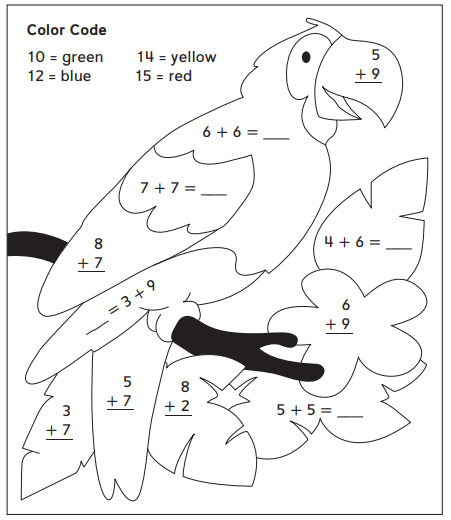
Answer:
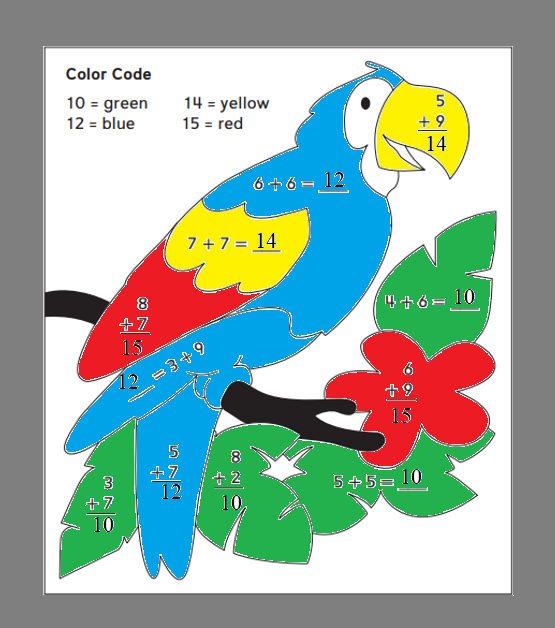
Explanation:
Color codes for the picture:
Green = 10.
Blue = 12.
Red = 15.
Yellow = 14.
Finding sum for equations given:
5 + 9 = 14 or Fourteen.. 3 + 7 = 10 or Ten.
6 + 6 = 12 or Twelve. 5 + 7 = 12 or Twelve.
7 + 7 = 14 or Fourteen. 8 + 2 = 10 or Ten.
8 + 7 = 15 or Fifteen. 5 + 5 = 10 or Ten.
3 + 9 = 12 or Twelve. 6 + 9 = 15 or Fifteen.
4 + 6 = 10 or Ten.
Practice
Question 2.
Complete the following number sentences.
3 + 7 = _______
1 + _______ = 10
_______ + 8 = 10
Answer:
3 + 7 = __10____.
1 + ___9____ = 10.
__2_____ + 8 = 10.
Explanation:
3 + 7 = 10.
1 + _______ = 10
=> 1 + ?? = 10.
=> ?? = 10 – 1
=> ?? = 9 or Nine.
_______ + 8 = 10
=> ?? + 8 = 10.
=> ?? = 10 – 8
=> ?? = 2 or Two.
Everyday Mathematics Grade 1 Home Link 6.7 Answers
Comparison Number Stories
Family Note
Today your child explored My Reference Book, an important Everyday Mathematics resource that children can use to find out more about the mathematics they learn in class. Ask your child to show you how to use the table of contents so you can explore My Reference Book together.
Question 1.
Write or draw a comparison number story. Then solve.
Example:
Yasmin bought 6 stickers this week. She bought 8 stickers last week. How many more stickers did Yasmin buy last week than this week?
8 – 6 = 2 more stickers
Answer:
Number of more stickers Yasmin bought last week than this week = 2 or Two.
Explanation:
Number of stickers Yasmin bought this week = 6 or Six.
Number of stickers Yasmin bought last week = 8 or Eight.
Number of more stickers Yasmin bought last week than this week = Number of stickers Yasmin bought last week – Number of stickers Yasmin bought this week
= 8 – 6
= 2 or Two.
Practice
Question 2.
Solve.
18 – _______ = 9
7 + _______ = 14
_______ = 4 + 4
Answer:
18 – __9_____ = 9
7 + __7_____ = 14
___8____ = 4 + 4
Explanation:
18 – _______ = 9
=>18 – ?? = 9
=> 18 – 9 = ??
=> 9 or Nine = ??.
7 + _______ = 14
=> 7 + ?? = 14
=> ?? = 14 – 7
=> ?? = 7 or Seven.
_______ = 4 + 4
=> ?? = 4 + 4
=> ?? = 8 or Eight.
Everyday Math Grade 1 Home Link 6.8 Answer Key
Number Stories
Family Note
Today your child learned that when solving a problem, it is helpful to think about what the problem is asking. This is called making sense of a problem. Making sense of a problem can help your child decide what needs to be done to solve the problem. For example, should the numbers in the problem be added or subtracted?
Throughout the year, encourage your child to explain how he or she knew what to do when solving a problem.
Solve.
Question 1.
You have 12 marbles. Your friend has 15 marbles. How many more marbles does your friend have?
_________ marbles
Answer:
Number of marbles more my friend has = 3 or Three.
Explanation:
Number of marbles I have = 12 or Twelve.
Number of marbles my Friend has = 15 or Fifteen.
Number of marbles more my friend has = Number of marbles my Friend has – Number of marbles I have
= 15 – 12
= 3 or Three.
Question 2.
You picked 6 red flowers and 8 blue flowers. How many flowers did you pick in all?
_________ flowers
Answer:
Number of flowers I picked in all = 14 or Fourteen.
Explanation:
Number of red flowers I picked = 6 or Six.
Number of blue flowers I picked = 8 or Eight.
Number of flowers I picked in all = Number of red flowers I picked + Number of blue flowers I picked
= 6 + 8
= 14 or Fourteen.
Question 3.
7 children were at the playground. 2 children went home. How many children stayed at the playground?
_________ children
Answer:
Number of children stayed at the playground = 5 or Five.
Explanation:
Number of children at the playground = 7 or Seven.
Number of children went home = 2 or Two.
Number of children stayed at the playground = Number of children at the playground – Number of children went home
= 7 – 2
= 5 or Five.
Tell someone at home how you knew what to do to solve the stories.
Practice
Question 4.
Use <, >, or = to make each number sentence true.
13 ______ 27
44 ______ 44
80 ______ 30
Answer:
13 __<____ 27.
44 __=____ 44.
80 __>____ 30.
Explanation:
13 ___<___ 27.
44 __=____ 44.
80 __>____ 30.
Everyday Mathematics Grade 1 Home Link 6.9 Answers
Name-Collection Boxes
Family Note
Today your child began working with name-collection boxes. See the attached Family Letter for more information about this Everyday Mathematics routine.
Question 1.
List all of the addition facts you know that have a sum of 10.
Answer:
1 + 9 = 10.
2 + 8 = 10.
3 + 7 = 10.
4 + 6 = 10.
5 + 5 = 10.
Explanation:
List of all the addition facts I know that have a sum of 10 are:
1 + 9 = 10.
2 + 8 = 10.
3 + 7 = 10.
4 + 6 = 10.
5 + 5 = 10.
Question 2.
Write as many names as you can in the name-collection box.

Answer:

Explanation:
1 + 14 = 15.
2 + 13 = 15.
3 + 12 = 15.
4 + 11 = 15.
6 + 9 = 15.
7 + 8 =15.
Practice
Question 3.
Write <, >, or =.
57 ______ 81
95 ______ 65
30 ______ 50
77 ______ 77
Answer:
57 __<____ 81.
95 __>____ 65.
30 _<_____ 50.
77 __=____ 77.
Explanation:
57 ____<__ 81.
95 __>____ 65.
30 ___<___ 50.
77 ___=___ 77.
Everyday Math Grade 1 Home Link 6.10 Answer Key
More Base-10 Riddles
Family Note
Today your child practiced exchanging ones and tens and identifying the value of digits in 2-digit numbers. Children also extended their work with base-10 blocks to show what happens when they have 10 tens that can be exchanged for 1 hundred. The base-10 block for 100 is called a flat.
Solve the riddles.
Example:
 What am I? 57
What am I? 57
Question 1.
 What am I? _________
What am I? _________
Answer:
I am 92 or Ninety Two.
Explanation:

=> 9× 10 + 2 × 1
=> 90 + 2
=> 92 or Ninety Two.
Question 2.
 What am I? _________
What am I? _________
Answer:
I am 48 or Forty Eight.
Explanation:

=> 4 × 10 + 8 × 1
=> 40 + 8
=> 48 or Forty Eight.
Question 3.
 What am I? _________
What am I? _________
Answer:
I am 9 or Nine.
Explanation:

=> 0 × 10 + 9 × 1
=> 0 + 9
=> 9 or Nine.
Practice
Question 4.
Circle the number sentences that are false.
8 > 18
6 = 3 + 3
9 = 9
15 = 5 + 6
11 – 3 = 14
Answer:
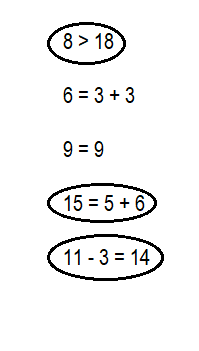
Explanation:
8 > 18 (False).
6 = 3 + 3 (True).
9 = 9 (True).
15 = 5 + 6 (False).
11 – 3 = 14 (False).
Everyday Mathematics Grade 1 Home Link 6.11 Answers
Dollars and Place Value
Family Note
Today your child used money to think about place value. Children exchanged ones, tens, and hundreds using pennies, dimes, and dollars. Because children have just begun to work with dollars, some of the problems on this page may be difficult for your child. If possible, use real money to model the problems. Start by counting the bills and coins in the example with your child.
Show how you would pay for each item.
Use ![]()

Question 1.
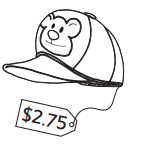
Answer:
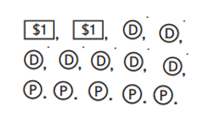
Explanation:


Question 2.
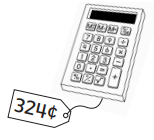
Answer:

Explanation:

Conversions:
1 Dollar = 100 cents.
1 cent = 1 penny.
Amount = 3 (100) + 2 (20) +4 (1)
= 300 + 20 + 4
= 320 + 4
= 324 cents.

Question 3.
Write this amount in two ways.
![]()
Total: _______ ¢ $ ________
Answer:
First Way: Amount= 111 pennies.
Second Way: Amount= 111 cents.
Explanation:
First Way:

Conversions:
1 Dollar = 100 pennies.
1 cent = 1 penny
Amount = 100 + 10 (1) + 1
= 100 + 10 + 1
= 110 + 1
= 111 pennies.
Second Way:
Conversions:
1 Dollar = 100 cents.
1 cent = 1 penny
Amount = 100 + 10 (1) + 1
= 100 + 10 + 1
= 110 + 1
= 111 cents.
Practice
Question 4.
Kyle bought 8 tennis balls, 6 baseballs, and 3 golf balls. How many balls did he buy in all?
___________ ______ + ________ + ________ = _________
Answer:
Number of balls he bought in all = 17 or Seventeen.
Number model: 8 + 6 +3 = 17 or Seventeen.
Explanation:
Number of tennis balls Kyle bought = 8 or Eight.
Number of base balls Kyle bought = 6 or Six.
Number of golf balls Kyle bought = 3 or Three.
Number of balls he bought in all = Number of tennis balls Kyle bought + Number of base balls Kyle bought + Number of golf balls Kyle bought
= 8 + 6 +3
= 14 + 3
= 17 or Seventeen.